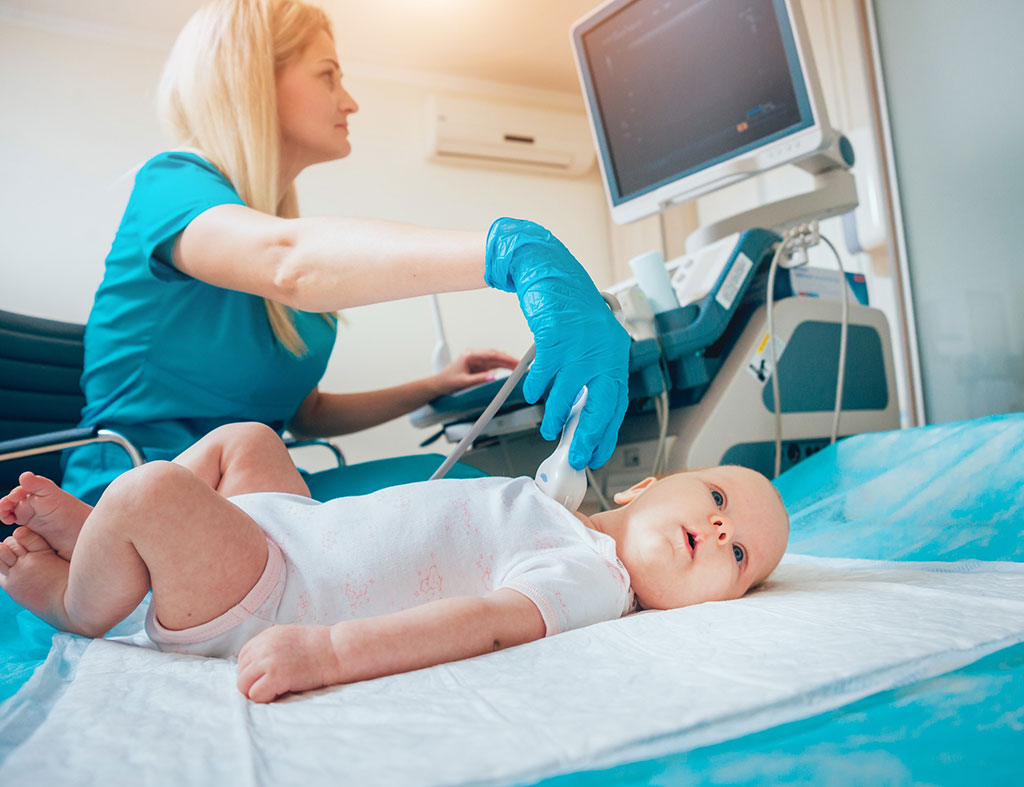Lung Point-of-Care Ultrasound Proves Valuable in Pediatric Emergency Settings
Posted on 01 Nov 2023
Acute bronchiolitis is the leading cause of lower respiratory tract infections in infants, and its treatment can differ based on how severe it is. Given this variability in treatment, it's crucial to accurately gauge the severity of the disease, yet current tools for doing so have their limitations. Although imaging hasn't traditionally played a significant role in diagnosing or evaluating bronchiolitis, previous studies have looked into the use of lung ultrasound. A new study now indicates that point-of-care ultrasound (POCUS) could be beneficial for determining the severity of bronchiolitis in children when they arrive at the emergency room.
Researchers from the Children's Medical Center Dallas (Dallas, TX, USA) found that higher lung POCUS scores in cases of acute bronchiolitis correlated with a greater need for respiratory assistance, longer hospital stays, and more critical conditions. In the study, the researchers attempted to identify what lung ultrasound could reveal in infants who came to the pediatric emergency department with a diagnosis of acute bronchiolitis. They also looked at how POCUS scores related to the level of respiratory assistance needed at 12 and 24 hours, as well as the maximum level required during the hospital stay, the overall condition of the patient, and the duration of the hospital stay.

In their study, the researchers included data from 82 infants who were 12 months old or younger. They observed that average lung ultrasound scores were lowest for infants who were discharged, slightly higher for those admitted to the general ward, and highest for those sent to the intensive care unit (ICU). Specifically, the average scores were 1.18 for discharged infants, 4.34 for those on the general floor, and 10.84 for those in the ICU. They also found that the average ultrasound scores for needed respiratory support were higher at the 24-hour mark compared to the 12-hour mark. For varying levels of respiratory support—none, low, and high—the ultrasound scores were 1.22, 4.11, and 10.45, respectively.
The study also showed statistically significant differences in mean scores across all outcomes and levels of respiratory support. Additionally, the researchers found the average length of hospital stay was around 84.5 hours, with a Pearson correlation coefficient of 0.489 (p < 0.0001) when comparing the duration of stay and lung ultrasound scores. Despite these findings, the researchers have acknowledged that more research is needed to establish whether lung POCUS scoring is as reliable as existing methods or how it stacks up against traditional clinical assessments. Nevertheless, they emphasized that lung POCUS could serve as an objective tool for evaluating the severity of acute bronchiolitis.
“These outcomes are of significant interest to the emergency department clinician managing a patient with acute bronchiolitis as lung ultrasound may provide an additional objective tool in assessment and prediction of disease severity,” the researchers wrote.
Related Links:
Children's Medical Center Dallas














